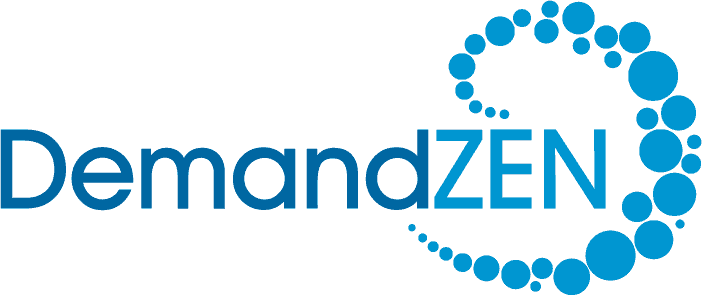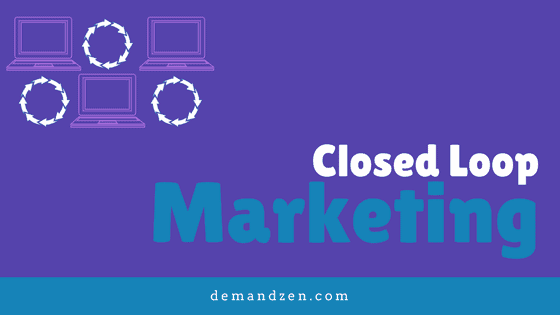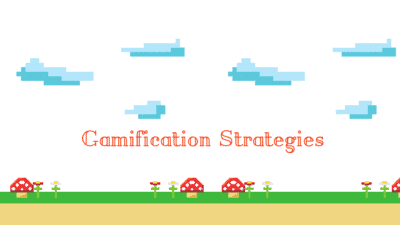What Exactly is Closed Loop Marketing?

To put it more simply than the concept deserves, closed loop marketing is data-driven marketing that uses sales information to convert qualified leads into customers. Leads go into the marketing machine, and they either become disqualified or sales-ready.
Closed loop marketing expands on the idea of the traditional sales funnel where prospects are taken from lead to revenue. It’s not just about getting them to buy once, but creating a consistent experience for the customer and keeping them long term. This requires a few very important things.
Marketing and sales working together
At the heart of closed loop marketing is the concept that sales and marketing need to work together to create a consistent user experience. Marketing and sales must work together to determine at what point marketing qualified leads are shared with the sales team. It should be a particular step or action that the prospect takes such as attending a webinar, downloading a decision-level asset, or submitting a contact form request. After sales contacts those leads, marketing needs to be aware of how those leads are or are not progressing through the buying cycle.
Marketers need the ability to look at the entire path a customer took to purchase (or to the point of disqualification). Sales fills in the details around that buyer’s specific problems and questions.
After all, a marketing campaign that drives a huge number of leads is wasted spend if they result in disqualified leads. For instance, if leads that come in through a giveaway have no intent in buying (or don’t have the power to buy), you need to revise the way you did the giveaway campaign. It’s up to marketing to use that data to determine if their audience is not interested in giveaways, if the wrong audience was targeted, or if the language was inappropriate for the target audience.
The most important aspect of closed loop marketing is gaining insight into who your audience is. Constant communication between sales, marketing, and support helps marketing define the audience appropriately. Since sales is the one speaking directly with prospects, they can share actual responses. Sharing prospect and customer thoughts, problems, and fears regarding the product allows marketing to tailor campaigns even further.
Implementing consistency
The easiest way to create a consistent experience for your customers and prospects is to use the same language. Marketing, sales, and support materials shouldn’t be drastically different, but instead complementary to one another.
If your company doesn’t already have a brand or style guide, it’s time to create one. This guide will define the tone of your materials as well as color schemes and fonts. You’ll also want to make sure you’re using the same logo (or similar iteration of the same logo). If marketing uses bright colors in their materials, and sales uses dull colors with an outdated logo, a prospect may get the sense they’re talking to a disjointed company.
For tips on aligning sales and marketing (and staying aligned over time), check out this blog post.
Choosing the right tools
Automation is a huge factor in closed loop marketing. Sales and marketing need to check in with one another, but that process shouldn’t be completely manual. Streamline your workflow by choosing the right marketing automation, CRM, and document sharing tools.
Before you do anything, ensure you standardize tools across your company. With everyone using the same tools (such as Google docs over Microsoft Word), you’re able to communicate more easily. This also reinforces the idea of consistency; it makes things more complicated when you get a PDF from one person and .docx file from another.
What tools do you need to get started?
- Find a CRM that fits the size and scope of your business
- Choose a marketing automation platform that integrates with your CRM
- Implement a project management tool to avoid lengthy email chains or to-dos getting dropped
- Set up Google Analytics to better track website visits and conversions
As you’re setting up your tools, make sure your CRM and marketing automation platform can talk to one another. There are plenty of CRMs out there with a marketing automation feature or add-on, and vice versa. Choose carefully. Don’t be afraid of being too picky—you don’t want to go through this process again later.
Additionally, you should implement both implicit and explicit lead scoring. This allows you to measure a variety of actions your prospects take. A streamlined marketing machine should tell you how leads came in, how they interact with your brand, and how they interact with sales. Not to mention, how those leads aren’t interacting with you.
Tracking ROI
Finally, tracking ROI on your campaigns is of the utmost importance in closed loop marketing. To determine the effectiveness of both your marketing efforts and sales team, you’ll need to define a target ROI and a target spend. Actual spend is another factor in determining ROI, so make sure you’re tracking that as well.
Measuring your ROI proves the efficacy of your initiatives. It also provides additional insights into your campaigns. Use your ROI data to end campaigns that aren’t producing and move more spend towards profitable ones.
In cases where determining ROI isn’t obvious, such as a campaign where the goal is a registration and not a purchase, work with sales to define what a registration, and a net new lead, is worth. Use your past conversion data for this registration (or similar ones) to define the value. If you’ve never attempted a campaign like this before and don’t have your own data to use, look up industry standards. You can also re-evaluate ROI for a particular campaign over time once you acquire more data.
At DemandZEN, we love closed loop marketing because we wholeheartedly believe that teamwork equals success. Read more about our services.
You Might Also Enjoy These Posts
Demand Generation vs Lead Generation
Gamification Strategies: Badges in B2B Marketing
Welcome To DemandZEN
DemandZEN specializes in Account-Based Demand Generation and solving the challenges around finding, engaging and converting target accounts into real opportunities for B2B Technology and Services companies.



